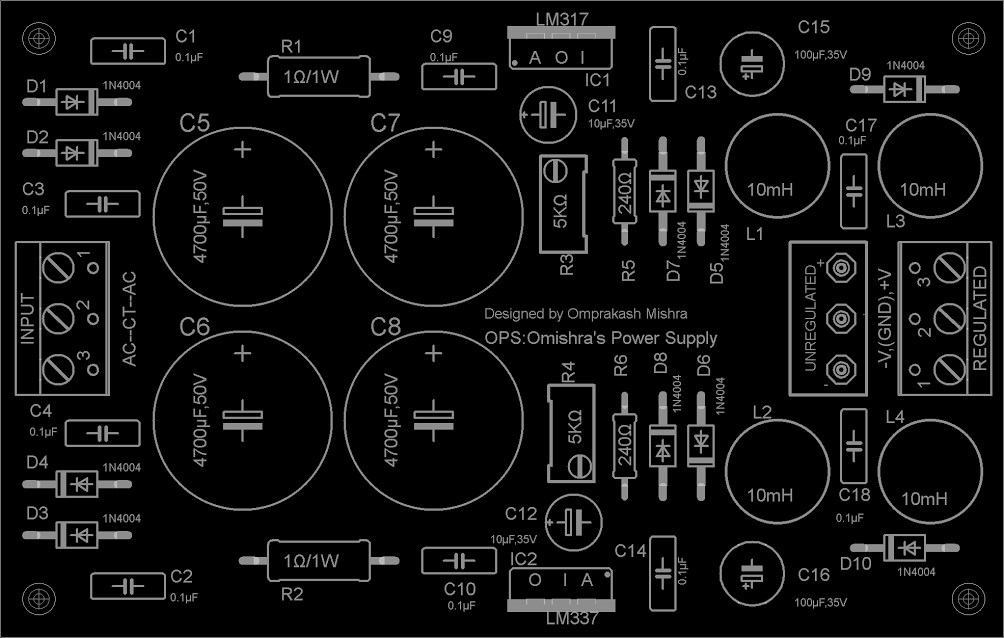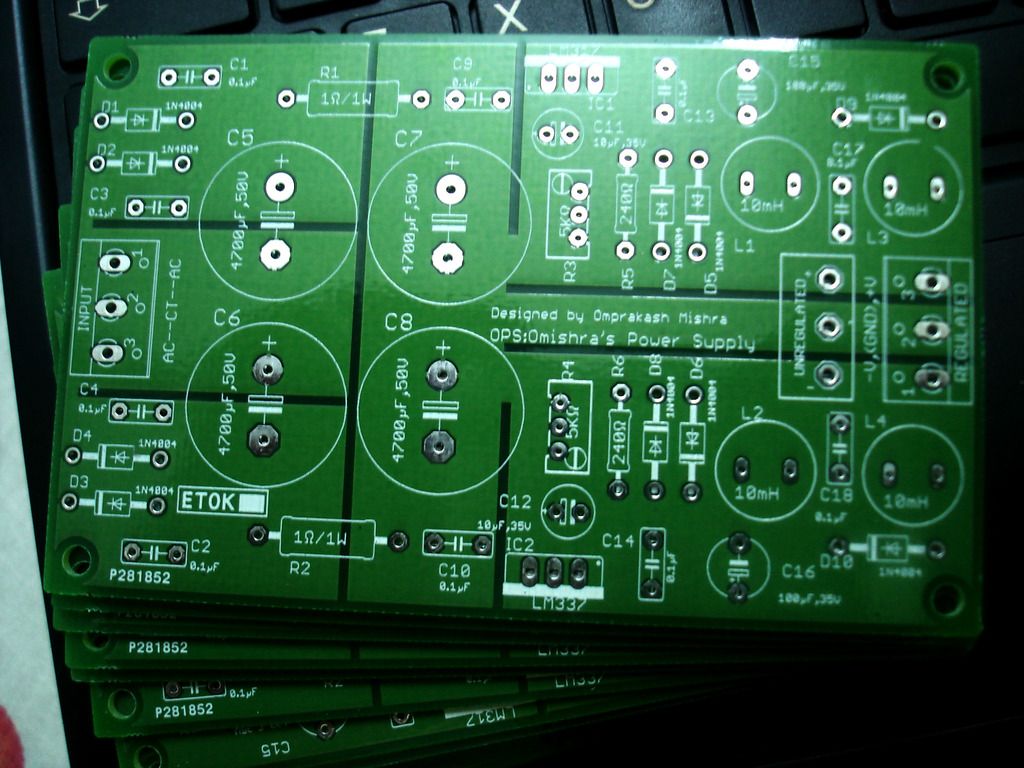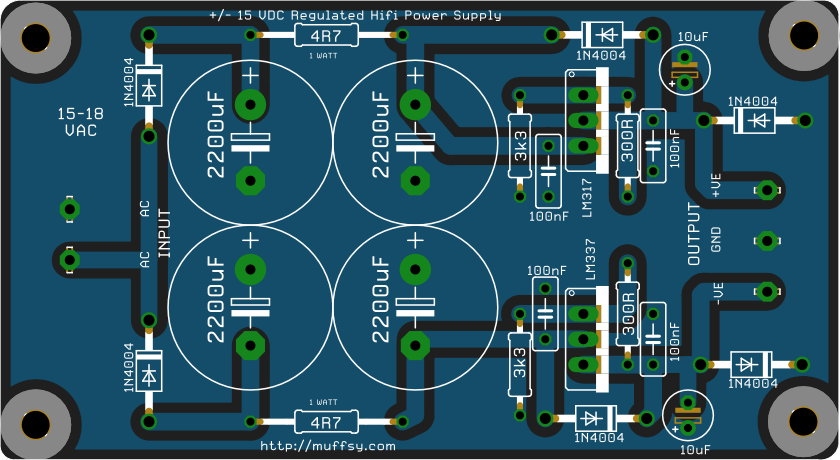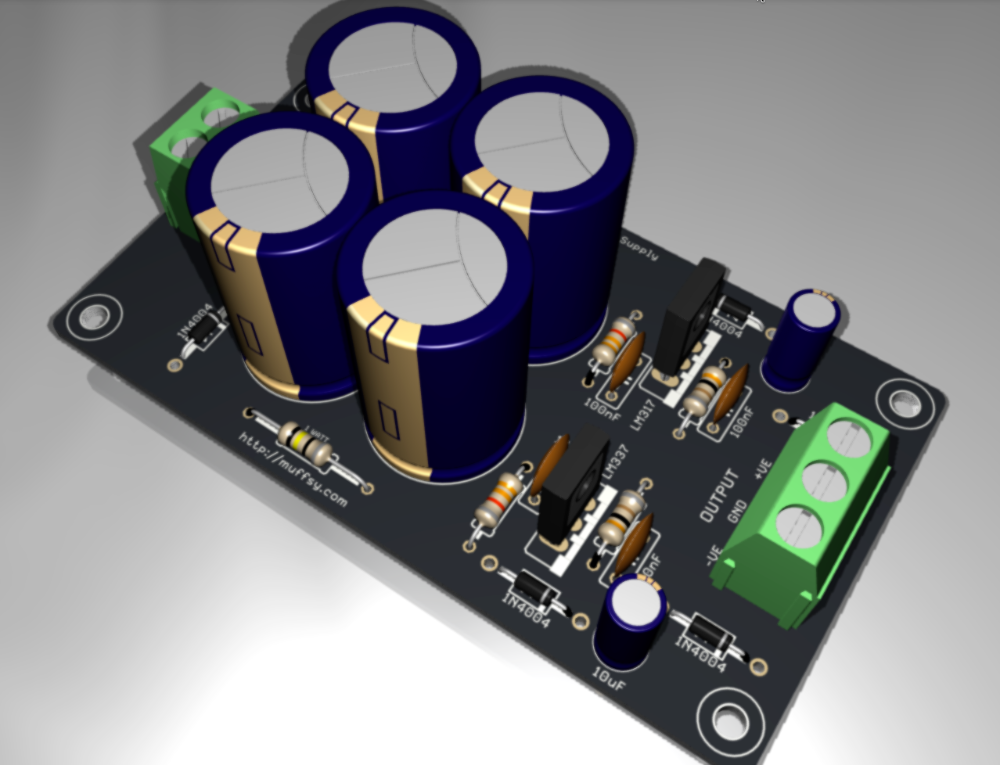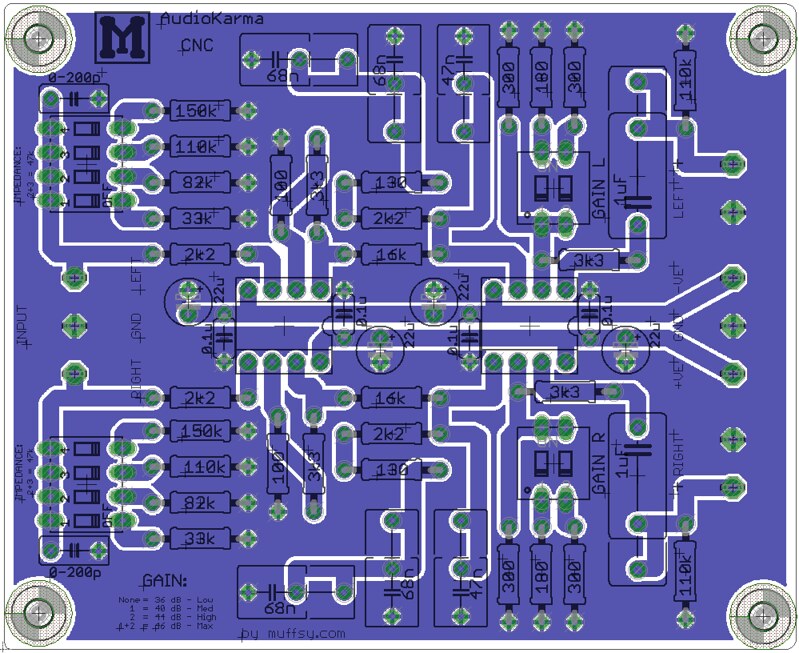Hi, everyone
This is a great thread!! I am going to get my first turntable this X'mas and therefore need a phono stage. I first found Muffsy website from where I was led to here. Based on many posted in this thread, it seemed that this CNC phono stage is not a complicated build. Just curious what is the difference between Muffsy's version and the one described in this thread? I was going to buy Muffsy's kit but then decided to give myself extra challenge to source the parts (I prefer some parts that are not used in the kit). I have downloaded the Digikey BOM that HypnoToad posted in post 193 (thanks!) and the schematic. Just curious where can I get the PCB (Muffsy no longer sell PCB only). Thank you very much in advance for the help!
Regards,
This is a great thread!! I am going to get my first turntable this X'mas and therefore need a phono stage. I first found Muffsy website from where I was led to here. Based on many posted in this thread, it seemed that this CNC phono stage is not a complicated build. Just curious what is the difference between Muffsy's version and the one described in this thread? I was going to buy Muffsy's kit but then decided to give myself extra challenge to source the parts (I prefer some parts that are not used in the kit). I have downloaded the Digikey BOM that HypnoToad posted in post 193 (thanks!) and the schematic. Just curious where can I get the PCB (Muffsy no longer sell PCB only). Thank you very much in advance for the help!
Regards,


